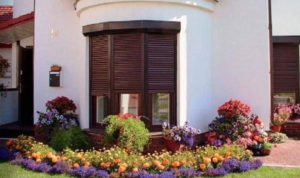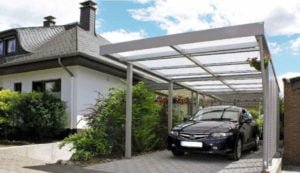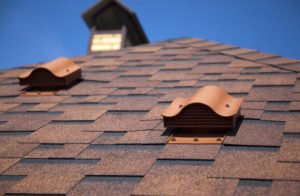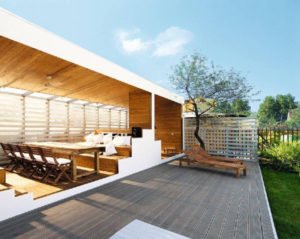
Basically, the summer passes quickly and quietly. Three months can be rejoice at hot weather, and the rest nine – only dream about it. Long autumn evenings and winter nights from the cold in the apartments saves the Central heating system. And in private homes are increasingly fireplaces-not only sources of heat, but also symbols of comfort.
To equip in the house high-quality and, most importantly, a safe fireplace in the power of only professionals. No book or step by step instructions-an article on the Internet will not turn you into an experienced Mason. First of all, when designing a fireplace, you need to pay special attention to the conclusion of combustion products: properly design and install the chimney.
If we make a serious mistake at this stage, there is a great risk that the combustion products will provoke a fire. Small miscalculations in the design and installation of a chimney lowers the efficiency of heat transfer from the wood. In addition, there will be a possibility of carbon monoxide entering the room and severe damage to the walls in places of passage of pipes.
Before starting the construction of the fireplace, it is necessary to determine what material the chimney will be made of. This issue deserves detailed consideration.
Brick, steel or ceramic? The pros and cons
In urban and rural construction until recently, most often encountered brick chimneys. The universal building material was allowed to vary the wall thickness and the number of output channels of the combustion products, and to draw the necessary protrusions and thickening at the location of the pipe.

Brick chimney will last a long time and regularly
If you follow exactly all the technology of the installation, the brick chimney will last a long time and regularly. But it has significant drawbacks:
- a large mass of the structure requires the construction of the Foundation
- operation of the brick chimney in the winter provokes the formation of condensate, which destroys the structure and significantly reduces its service life.
When choosing a brick chimney, pay attention to the most common mistakes in its arrangement:
- poor quality or unsuitable material (wall, partition or weakly burned brick)
- type of masonry “on the edge” in basic construction and “toothed” masonry at its inclined sections
- improperly prepared solution
- the seams of a thickness exceeding 5 mm
- sloppy brick cutting
- dual vertical seams and the presence of voids
- installation of brick chimney close to the structures made of combustible materials
Brick chimney requires constant care and regular cleaning. Long since such pipes by all means plastered and painted in white color – on a light surface it is easier to notice a soot and cracks. Not everyone can afford such a special care of the brick chimney, so in new homes, you can increasingly see the design of stainless steel.
Steel chimneys are lighter than brick. They do not need an additional Foundation, they are durable and easy to install, including can be built into a ready-made heating system. A round cross-section metal tubes for optimal thrust and withdrawal of products of combustion. And less soot deposited on the metal walls than brick.

Steel chimney
A significant disadvantage of the steel chimney is that when in contact with moisture, there is a risk of corrosion of the metal. That is why not all grades of stainless steel are applicable. Some manufacturers are trying to save money and choose a cheaper metal, which leads to premature destruction of the chimney, and sometimes to its collapse.
And finally, another view of the present chimney – ceramic pipes. Inside there is a pipe, then a layer of rock wool insulation, and outside – light concrete or mirror stainless steel.

Ceramic chimneys are popular
Minus the ceramic tube – not a very good combination of metal and ceramics due to the different coefficients of thermal expansion of these materials. However, despite this drawback, ceramic chimneys are popular. They are quick and easy to assemble, resistant to condensation, to high temperatures and, according to manufacturers, will last up to 100 years.
Important clarification: no matter what material you choose for the chimney, from self-Assembly is better to refuse at once. As mentioned earlier, only professionals will be able to perform works of such complexity qualitatively.
What should be the chimney
The correct chimney has a good thrust, a system of complete and unimpeded removal of combustion products, is characterized by rapid warming of the walls and overcoming the temperature threshold of condensation. It complies with fire safety standards and is durable, strong and easy to install.

Requirements for modern chimneys set out in many useful manuals for installation.
These documents answer questions about how to properly and safely mount the chimney at home, so that it does not become a source of ignition. Many of these documents are in the public online access-study and monitor the work of installers.
Different chimneys insulated different
Combustion products contain various substances, including sulfur compounds, which react with oxygen and form a weak solution of sulfuric acid. This is the most dangerous condensate that settles on the inner walls of the chimney, destroys the structure and often becomes the cause of fire. To the amount of condensate does not exceed the established safe standards, it is necessary to competently carry out work on warming the system.
To insulate a brick chimney is quite difficult, so it is, as a rule, do not set close to the outer walls of the building. The outer part of the pipe is lined with an additional number of bricks or other decorative material. Of course, this is not quite insulation, but still the chimney becomes more stable and durable.
Brick pipes with a wall thickness of half brick are considered insulated if they are installed inside the building, and above the roof rises only a small part of the chimney. The outer brick chimney is insulated if the thickness of its walls is not less than 65 cm (2,5 bricks). In the attics of the brick pipe plaster warm solutions of stone or basalt wool.
Double-layer steel chimneys insulated initially. The metal structure has a space between the external and internal pipe, which is filled with a heat-insulating layer of stone wool with a thickness of 30-50 mm. the External parts of the chimney are insulated with material up to 100 mm. Insulation not only provides reliable protection against condensation, but also solves the problem of fire safety of the internal parts of the flue channel.

Steel modular chimneys
For insulation of the chimney should be of good quality and reliable material that is resistant to fire and environmentally safe. For example, the Danish company ROCKWOOL produces a wide range of thermal insulation materials made of rock wool. For insulation of flat surfaces of furnaces, fireplaces and high-temperature equipment, rigid heat-insulating plates FIRE BATTS are suitable. The material withstands temperatures up to + 750°C and is used to create fire barriers and arrangement of the pit and furnace space.

Also for insulation of the chimney can take WIRED MAT stitch – bonded fibre Mat with operating temperatures up to +750°C the surface is made of galvanized mesh. Last year, ROCKWOOL successfully launched the production of cut segments for the insulation of steel modular chimneys. These segments are used by the largest manufacturers of chimneys and can be purchased as part of finished products.

ROCKWOOL WIRED MAT
How to properly care for the chimney
At operation of flues various problems can arise, we will consider the most widespread.
Improper use of the heater and the deterioration of the insulating properties of the flue on the inner walls of the pipe, the soot is deposited, able to destroy the structure and cause of the fire. This is one of the most common problems in brick chimneys, which can be avoided by preventive measures and regular cleaning of pipes.

Chimney problems can cause a fire
Poor traction in the chimney usually appears due to design errors, improper installation of pipes and poor-quality insulation material. To correct it, it is necessary to change a design of a flue and to increase a layer of an insulating material on the pipes located on an attic and over a roof.
The chimney can burn if poor-quality materials were used for its construction or the rules of operation of the heating device were violated. As the statistics show, the majority of fires in private homes occurs in the junction of the chimney overlap and is a consequence of improper installation of penetration and insulation of the pipe.
It is possible to avoid troubles if to entrust design and installation of a flue to professionals. Remember that when installing insulation and design, the responsibility for the possible consequences are to you personally. It is equally important to regularly, 1-2 times a year, to prevent stoves and fireplaces, then the fire in the house will only be a source of warmth and joy.

All work must be performed by professionals




Leave a Reply